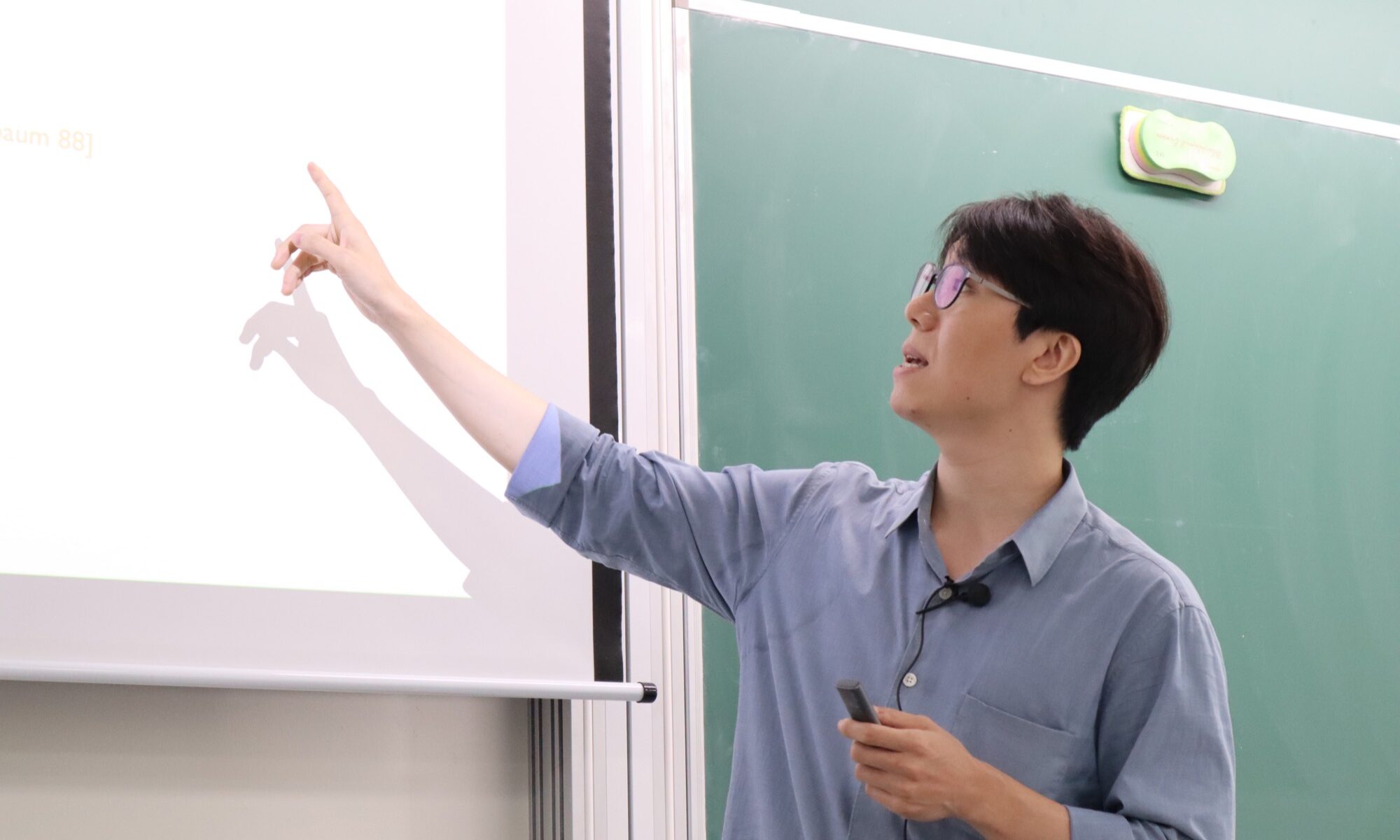On July 30, 2024, Euiwoong Lee (이의웅) from the University of Michigan gave a talk at the Discrete Math Seminar on the parameterized complexity of approximating the minimum size of a deletion set to make a graph belong to a fixed class. The title of his talk was “Parameterized Approximability of F-Deletion Problems“.
Euiwoong Lee (이의웅), Parameterized Approximability of F-Deletion Problems
For a family F of graphs, the F-Deletion Problem asks to remove the minimum number of vertices from a given graph G to ensure that G belongs to F. One of the most common ways to obtain an interesting family F is to fix another family H of graphs and let F be the set of graphs that do not contain any graph H as some notion of a subgraph, including (standard) subgraph, induced subgraph, and minor. This framework captures numerous basic graph problems, including Vertex Cover, Feedback Vertex Set, and Treewidth Deletion, and provides an interesting forum where ideas from approximation and parameterized algorithms influence each other. In this talk, I will give a brief survey on the state of the art on the F-Deletion Problems for the above three notions of subgraphs, and talk about a recent result on Weighted Bond Deletion.
Euiwoong Lee (이의웅) gave a talk on the minimum k-cut problem at the Discrete Math Seminar
On July 27, 2021, Euiwoong Lee (이의웅) from the University of Michigan gave a talk at the Discrete Math Seminar on the proof that the Karger-Stein algorithm finds the minimum k-cuts with the probability $\Omega(n^{-k})$, which is tight and improves previous bounds. The title of his talk was “The Karger-Stein algorithm is optimal for k-cut“.
Euiwoong Lee (이의웅), The Karger-Stein algorithm is optimal for k-cut
In the k-cut problem, we are given an edge-weighted graph and want to find the least-weight set of edges whose deletion breaks the graph into k connected components. It is easy to see that the elegant randomized contraction algorithm of Karger and Stein for global mincut (k=2) can be naturally extended for general k with the running time of $O(n^{2k-2})$. Using tree packings, Thorup gave a deterministic algorithm that has the same running time.
In this work, we show that for any fixed $k\ge 2$, the Karger-Stein algorithm outputs any fixed minimum k-cut with probability at least $\Omega(n^{-k})$. This also gives an extremal bound of $O(n^k)$ on the number of minimum k-cuts in an n-vertex graph and an algorithm to compute a minimum k-cut in similar runtime. Both are essentially tight. The first main ingredient in our result is a fine-grained analysis of how the graph shrinks—and how the average degree evolves—under the Karger-Stein process. The second ingredient is an extremal result bounding the number of cuts of size at most $(2-\delta)OPT/k$, using the Sunflower lemma.
Joint work with Anupam Gupta, David G. Harris, and Jason Li.



